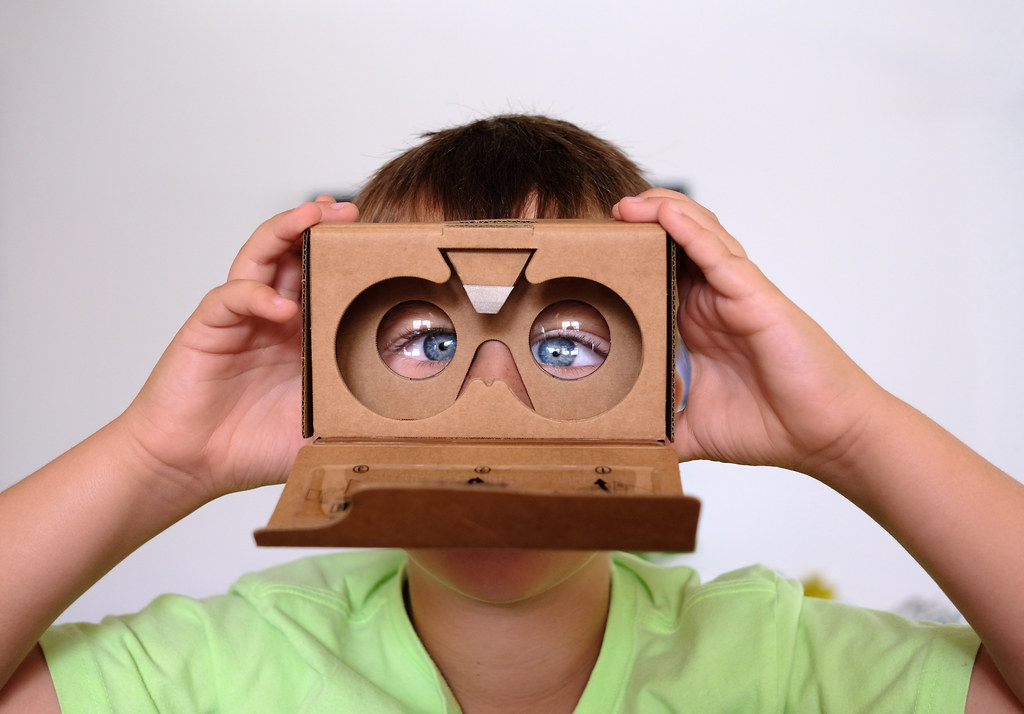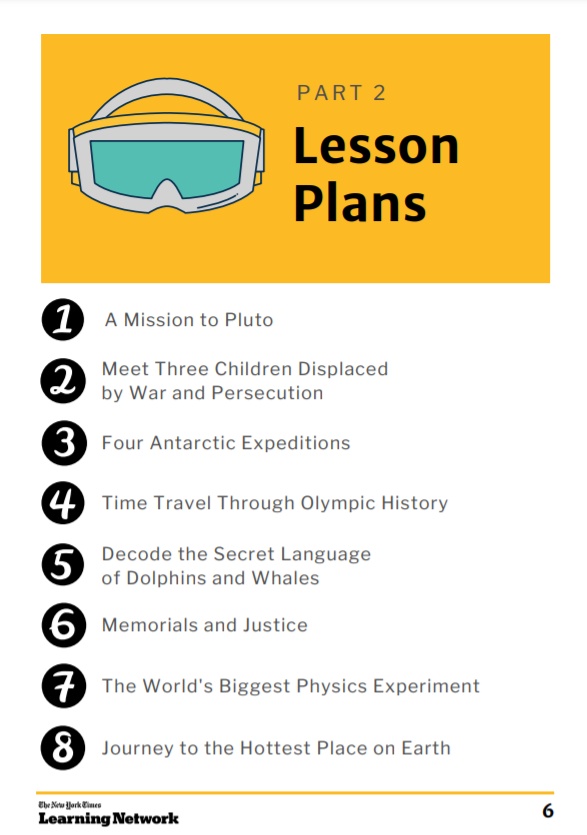Home » Posts tagged '#virtualreality'
Tag Archives: #virtualreality
Virtual Field Trips with Google Cardboard
Google Cardboard is an affordable virtual reality viewer. The sets are typically made out of cardboard or plastic, keeping them cost-effective and easier to use in classrooms. By sliding a smartphone that has the Google Cardboard app installed into the headset viewer, users can experience a 3D virtual reality at a low cost.

Using Google’s Arts and Culture Expeditions, students can use their Google Cardboard headsets to take virtual field trips to a variety of places. The tool allows you to choose from five different subjects; Science and Technology, Arts, Geography, Natural History, and History. For this post, I’ll be discussing a virtual field trip that is useful for history classes.
There are multiple topics under the history tab from ancient history to Black history. By clicking on the Egypt option, viewers can take a 360-degree tour of the Pyramids at Giza. Each slide gives a brief description of the history.

After touring the pyramids the expedition moves on to teaching about The Great Sphinx. These slides give a history of The Sphinx and some fun facts as well as a 360-degree view of the historic site. Following these slides, a brief overview of the Mastabas, the structures used as tombs for nobles located near The Great Sphinx, is given as well as a tour of them.

Many other important historical locations throughout Egypt are shown in this expedition including the boat pits located at the bottom of the Khufu’s Pyramid, the Causeway, and Cairo.
On the main page for the Egypt expedition, there are even more stories to be found including Myths and Heroes and The Curse of Pharaoh Tutankhamun. Below the stories collection is 8,910 items that students can view to explore Egypt even more in-depth.
These expeditions with Google Cardboard are a great way to give students a new view of history. The tool allows them to step into the location or the time period through virtual reality, giving them a better understanding of the subject. Using Google Cardboard to teach students about the culture and rich history of regions all around the world can be made easy with the use of virtual reality.

Thank you for reading!
Samantha Pollina
Virtual Reality in the Classroom
by Shelby Garrison, Garris37

Virtual reality can be such an awesome tool for the classroom! I have actually gotten to attend a meeting while doing field study in a classroom using virtual reality and it was so interesting and amazing to watch. I wish This tool was around when I was in school, it definitely makes learning more interesting. This was especially cool for sciences and engineering. It give students opportunities to travel to different places and see all kinds of different things without even leaving the room. The seminar I got to participate in involved dissecting a pig all virtually!
How does this affect teaching and achieving the SDGs? Well there are tons of opportunities for students to see first hand the issues that need working on first hand through virtual reality. There are companies that actually make virtual reality content specifically for people to use them to help spread awareness around the goals.

Virtual Reality using Google Cardboard in the classroom!
Have you heard of Google Cardboard? or are you familiar with the various features it offers? If not your in luck because today I will be covering its awesome features and how teachers can use it in their classrooms!

and price of each.
So what exactly is it? Well according to Google it is, “…an inexpensive handheld device that powers a virtual reality (VR) experience using almost any smartphone running Cardboard-enabled apps”.
To use Google Cardboard you will need, a Cardboard viewer : hardware that is used to view VR content with a smartphone. A smartphone: typically supplied by the consumer and an Android app: created by third-party developers.
You can also make your own using the instructions provided by Google:

The features of the Cardboard viewer include:
- Holder/enclosure for smartphones with screens up to 6 inches that assembles (and disassembles) in just 3 steps
- A button for performing actions with Cardboard-enabled apps, designed to work with most smartphone
- High-quality lenses made of durable material
Click HERE to read where I got this information.
Apps you can use through VR include but not limited to are Google expeditions, Veative, Nearpod, Youtube 360 videos, Google Earth Tours, Google Lit Trips etc.
In this blog post I will be focusing on Google Expedition and it’s great effects in the classroom. (Now discontinued, read article HERE)
Watch how VR has and can potentially change how teachers teach and how students learn!
Resources for teachers to know when learning about Google VR
I have included lesson plans using Google VR/ Google Cardboard below:
https://www.teacherspayteachers.com/Browse/Search:google%20cardboard
VR will contribute to successful global collaborations through teaching students to have cultural understandings, global awareness, and a historical perspective. Tools like Google Cardboard give students the opportunity to transport to other countries and immerse them in historical civilizations based on what the teacher has assigned or has included in the lesson plans.
Thanks for reading! Be sure to follow me on Twitter @smirnah1 for updates!
Virtual Reality as a Classroom Experience
Virtual reality is a name that is used to describe a three-dimensional, computer-created world or environment that people can interact with. Virtual reality is a great technological tool to use in the classroom. The article, Cultivating New Levels of Student Engagement through Virtual Reality, shares that virtual reality helps with student retention by eliminating the detachment between students and and content through an immersive experience. The students in this article and video (posted below) use Google Earth simulations.
A memorable quote from this video is, “virtual reality… it provides… an experience anchor to the instruction that we can’t duplicate in another way”.
This form of teaching through virtual reality has endless possibilities. A good source for some lessons in teaching with virtual reality can actually be found in this New York Times article called Virtual Reality Curriculum Guide: Experience, Immersion and Excursion in the Classroom. There is a downloadable guide within this article that gives eight lesson ideas.

Virtual Reality is an incredible way to get students actively involved in subject matters if the resources are available. Fortunately, sites such as Google Maps and other virtual field trips are available for free when Internet is available.
Diane Hoffman
Recent Comments